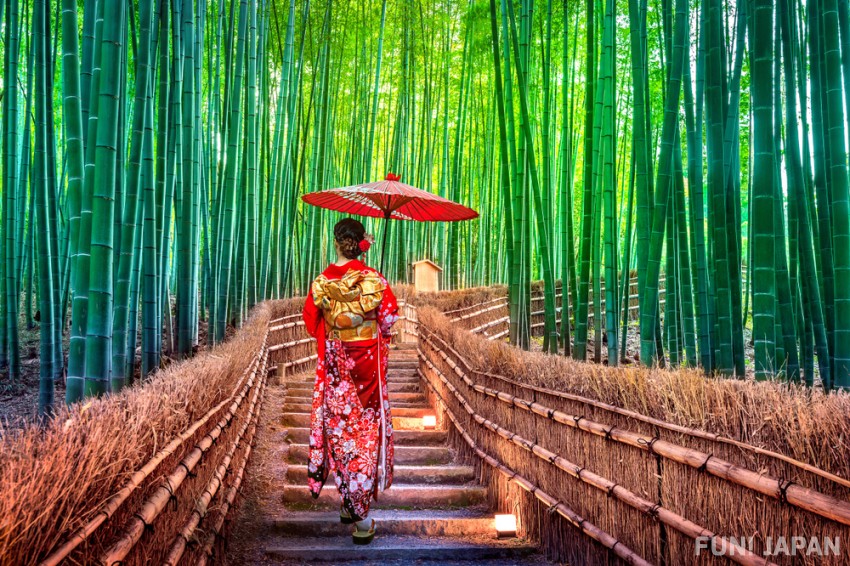
A bright and colourful red kimono. It may have a strong impression of being "passionate" in the world, but in Japan, red has been popular with Japanese people since ancient times as a noble colour. Yes, red kimono is a special existence for Japanese people. Now, let's introduce the meanings and colours of the Japanese red kimono.
Red Kimono's Meaning

Red kimono is very popular as a kimono that you can wear in colorful places such as Iro-Uchikake (色打掛 coloured sash-less robe) and Furisode (振袖), but what does red kimono mean?
Warding Off Evil (魔除け / Mayoke)

It is said to have the power to chase off the bad and bring in the good. In the sense of chasing off the troubles and praying for happiness in the future, it is the perfect color for the coming of age ceremony.
What is the coming of age ceremony?
Image of Blood
Red, which can be called a vivid and lively color of blood, makes you feel the vitality. For this reason, red is a sacred color, and there were times when the public was prohibited from wearing red kimono. For that reason, it was a color that the general public yearned on.
Colour Types of Japanese Red Kimono

Although red is red, there are various red colours in traditional Japanese colours.
- Tang's Crimson (唐紅 Kara-kurenai): Deep crimson red-dyed with safflower
- Autumn Foliage colour (紅葉色 Koyo-iro): A bright red color like maple that turns red in late autumn
- Western Crimson colour (洋紅色 Yoko-shoku): A deep, bright magenta red. Another name is "Yobeni" (ようべに west crimson). This Japanese "beni-iro" (crimson) that was introduced from the West in the late Edo period is actually called "carmine" in the western name.
- Scarlet colour (緋色 Hi-iro): Vivid red with a slight yellow tinge. A traditional colour name used since the Heian period. The colour name "Ake" (緋 can also read as Hi) means the colour of the sun or fire. Since the time of Empress Suiko (推古天皇), it is the highest color next to purple.
- Madder colour (茜色 Akane-iro): Dark red dyed with the roots of Akane (茜) plant. It is often used to describe the sky at sunset. The slightly bright Akane-iro is called madder in English.
Seasons when Red Kimono Shines
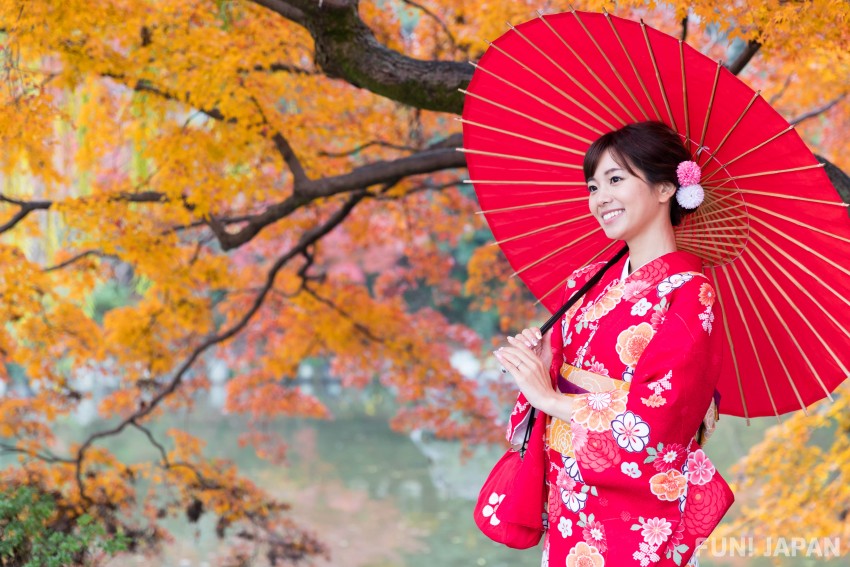
When choosing a color for a kimono, it is best to refer to the season. You may might think "Is the red one actually fit with spring?", but actually, spring is the season when light colored kimonos are preferred.
Autumn is one of the seasons when red kimono shines. As the name suggests, the red varieties of "autumn foliage colours" and the color of the sky at sunset "akane-iro", are recommended for this season when the autumn foliage begins to change in colours. Red kimono is also recommended in winter. In winter, the leaves fell and the colors of flowers and grass are reduced, so a red kimono shines brightly. Also, when you wear a kimono at a traditional event during the Year's End and New Year holidays, you can wear a gorgeous red kimono.
Occasions Where you can See Red Kimono
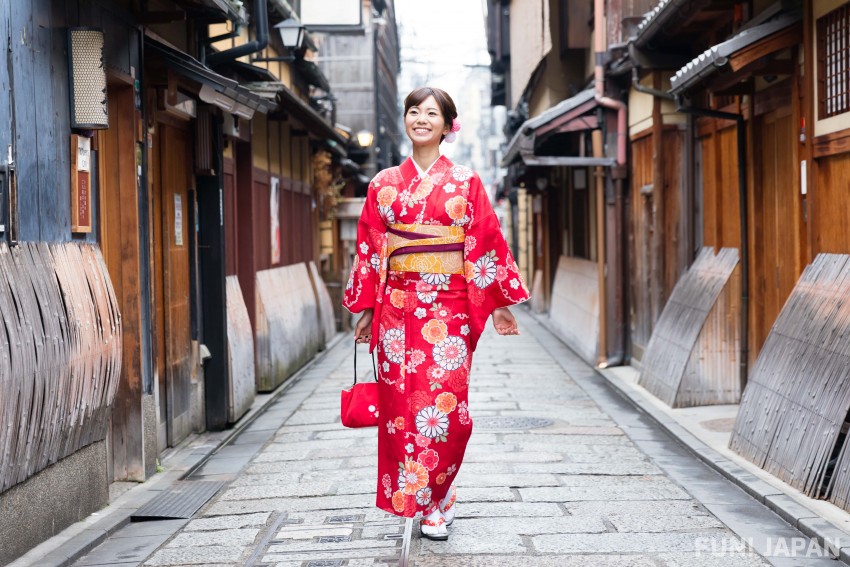
Have you ever seen red kimono during your visit Japan or in the information related to Japan on the media? Probably you might have seen them in these occasions.
Red Kimono is the Standard for Hina Doll

A seasonal festival to celebrate girls, Hina Matsuri (雛祭り Hina Doll festival). The classic kimono worn by the dolls for the Hina Doll is red. Hina dolls imitate a wedding ceremony in the Imperial Palace, and the dolls are dressed in official costumes for prestigious women, the Junihotoe (十二単 12 layers kimono).
Red Kimono Worn by Shrine Maiden
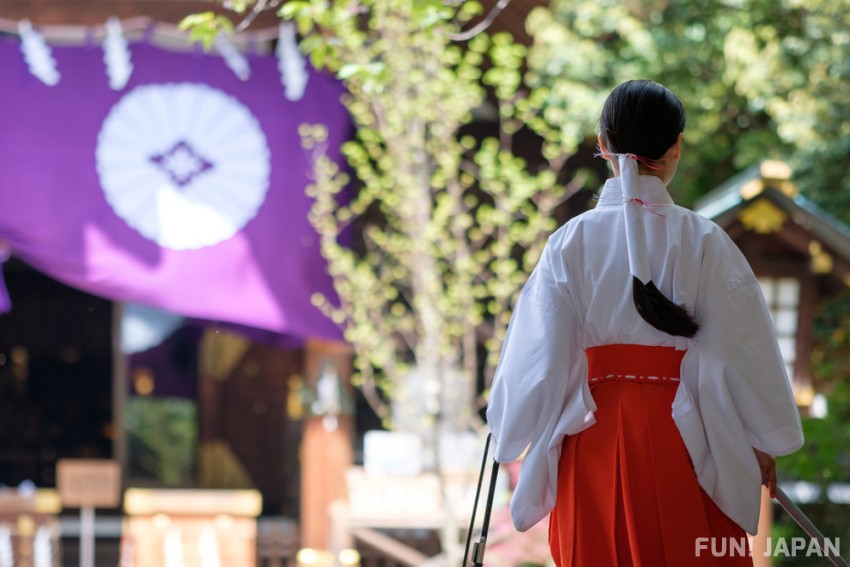
A Miko (巫女) or shrine maiden is a woman who works at a shrine and performs the service of Kagura (神楽 traditional stage-play) and dance to honour the gods. There is no special qualification is required to become a shrine maiden, but it is often done by unmarried women such as priest's daughters and relatives. Generally, people will be retiring from shrine maiden in their late twenties. A modern shrine maiden's costume is usually a white kimono and a red hakama. There are various theories why the hakama worn by a shrine maiden turned red. There are various meanings, such as meaning the god of the sun, the color of unmarried women, and the color of nobility.
How was it? There are meanings of the Japanese red kimono and many types of red colours; very surprising right?
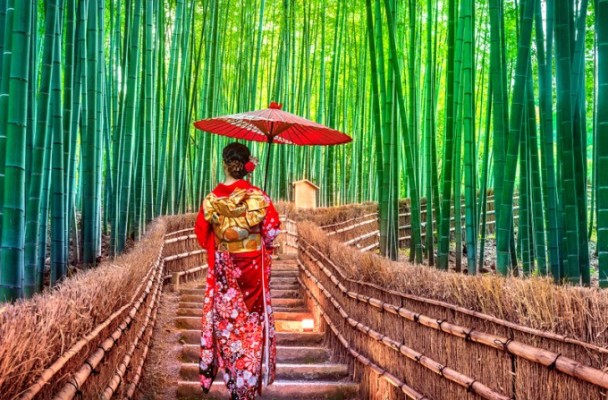
Comments